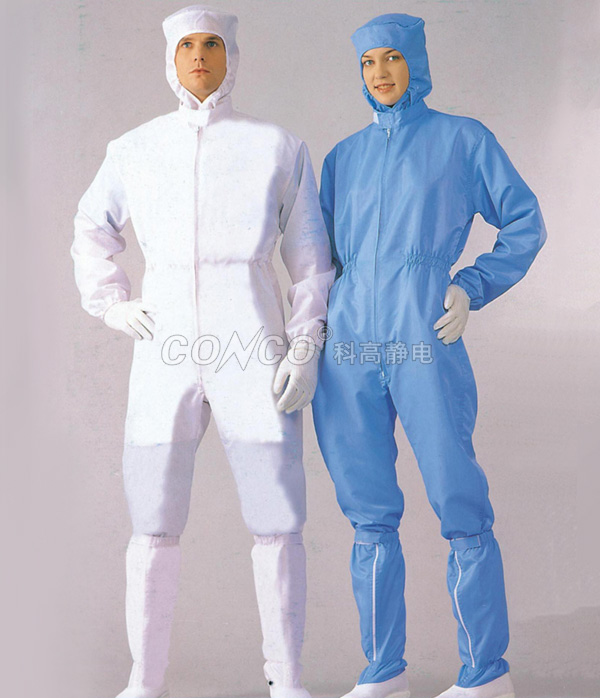

The principle of clean clothes is simple: It is made of […]
The principle of clean clothes is simple:
It is made of special polyester filaments, a series of conductive fibers interlaced in warp or warp and weft directions, through a special process. Has excellent and long-lasting electrical conductivity. It is a necessary measure for anti-static clothing of personnel.
Charge amount of work clothes: <0.6 micro library/piece. Charge surface density: <7 microbanks/square meter.
Fabric:
The fabrics used are: conductive silk fabrics, gabardine, yarn cards, TYVEK (acid and alkali resistant), etc.
Conventional optional fabrics: 5mm strip, 5mm grid, 2.5mm grid fabric conductive silk, in order, its anti-dust and anti-static effect is getting stronger and stronger; this is also selected according to the clean room level, generally CLASS10000 Clean rooms below (ten thousand zone) should use 5mm strip conductive silk, CLASS1000 (thousands zone) and should use 5mm grid; CLASS100 (class 100) clean room should use 2.5mm grid fabric conductive silk.
Features:
1. Japanese original silk processing technology, excellent anti-static performance, permanent, can effectively release the electrostatic charge of the human body;
2. The clothing itself does not generate dust, does not stick to dust, has good barrier properties, high density, high strength, and can effectively sterilize and inhibit bacteria;
3. Good washing resistance, bending resistance, abrasion resistance, etc., washing resistance ≥100 times, high temperature steam temperature: 120℃
4. Full-overlock sewing process with special equipment imported from Japan, one-time forming, good dust resistance, can be used in 10-10000 clean room;
5. The production and sales of breathable anti-static clean clothes are especially recommended.
Advantage:
1. The fabric itself does not emit dust: Because it is worn in a clean room, it is required that the fabric cannot be the source of dust in the clean room, which determines that the ultra-clean fabric can only be produced with chemically synthesized long fibers. Natural short fibers such as cotton, linen, and silk cannot be used in ultra-clean fabrics, although these raw materials can make the fabrics more wearable. At the same time, it is required that the selected chemical fiber filaments must be strictly controlled to generate dust. Generally speaking, fully dull polyester filament is not suitable for weaving anti-static ultra-clean fabrics. Because the matting agent added in polyester production-titanium dioxide will become a source of pollution.
2. The fabric should have good dust filtering: the dust in the clean room mainly comes from the air flowing in the room and the human body moving indoors. When the equipment conditions are determined, to improve the cleanliness is to control the tiny dust generated by the human body to the maximum extent in the clothes, and let it pass through the fabric into the air. This is the so-called high dust filter rate of the fabric. Improving the dust filter rate is at the expense of the air permeability of the fabric. Therefore, knitted fabrics and loosely woven woven fabrics are not suitable for clean rooms.
